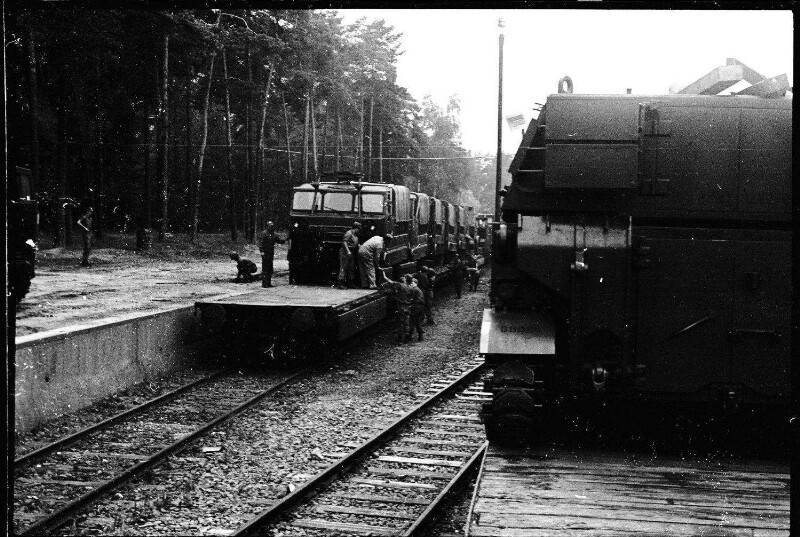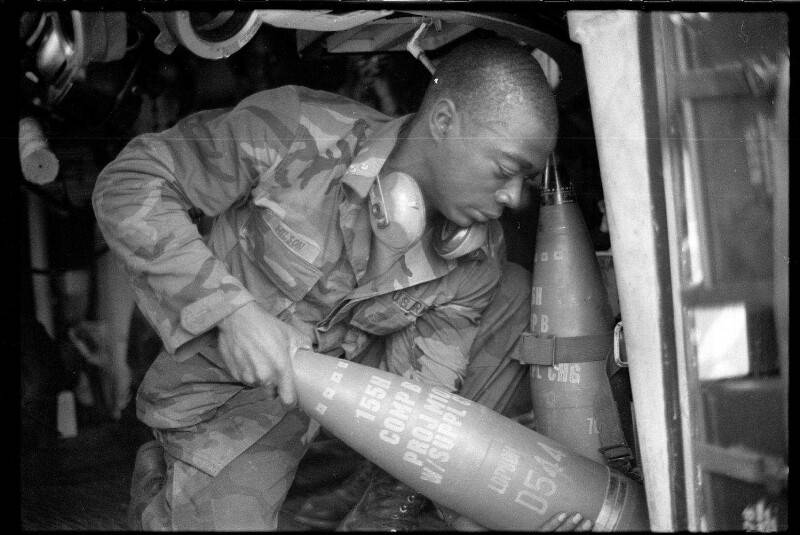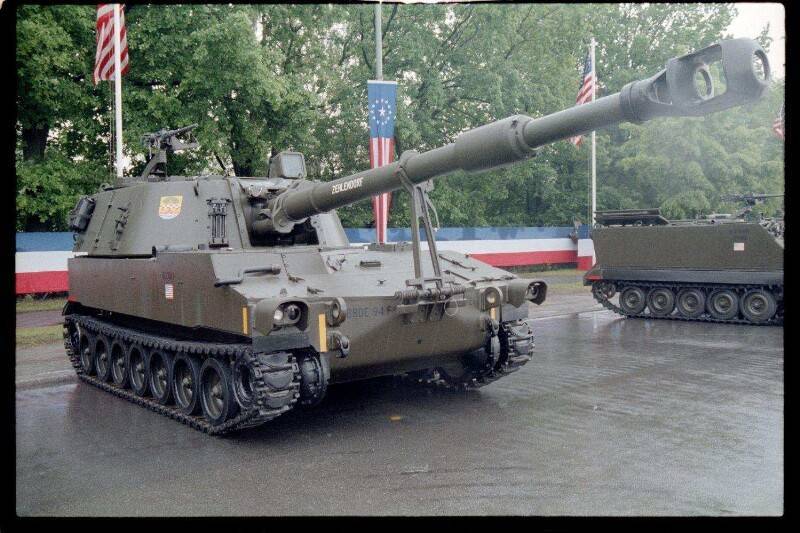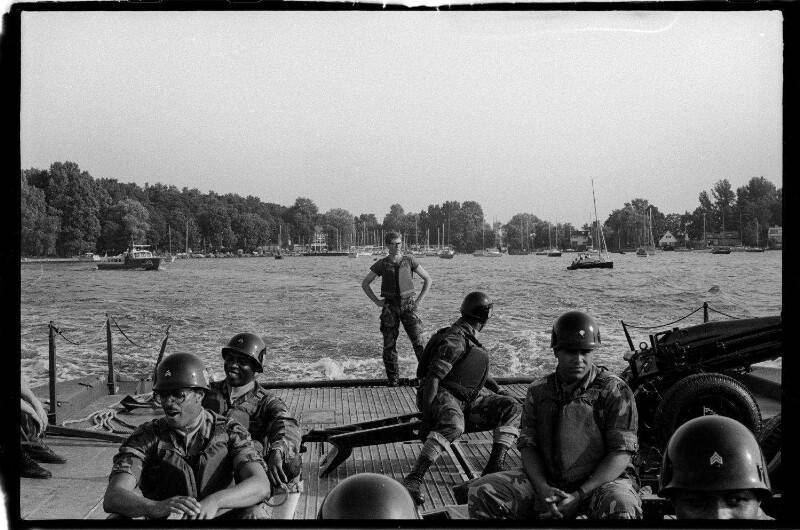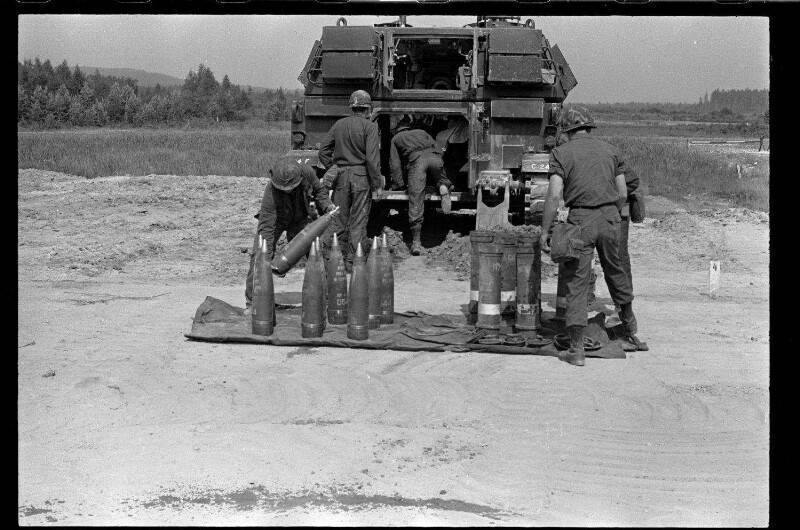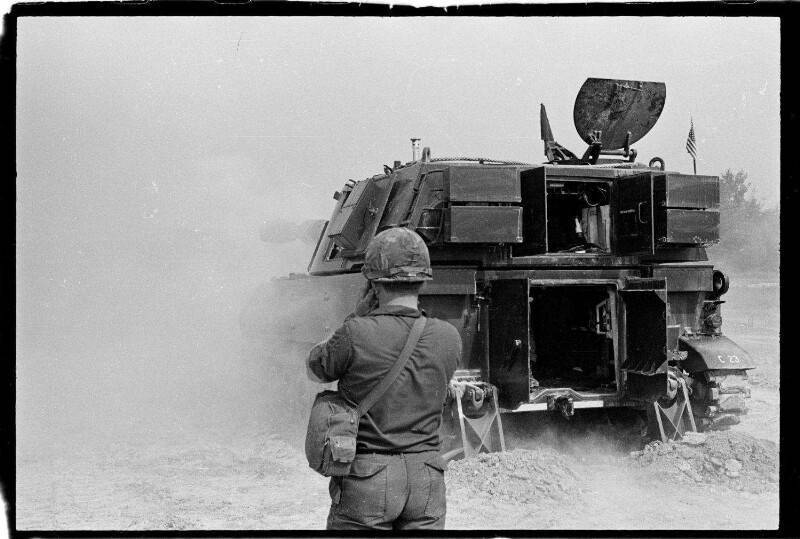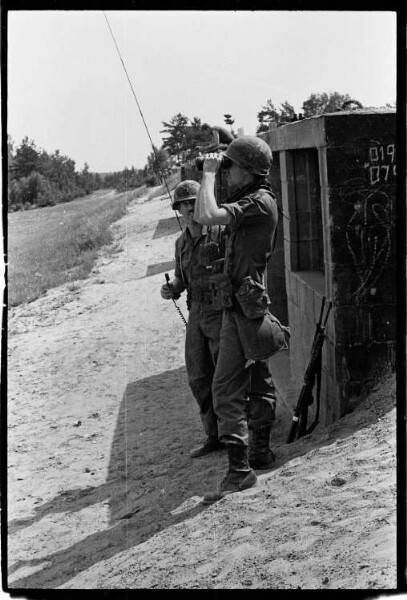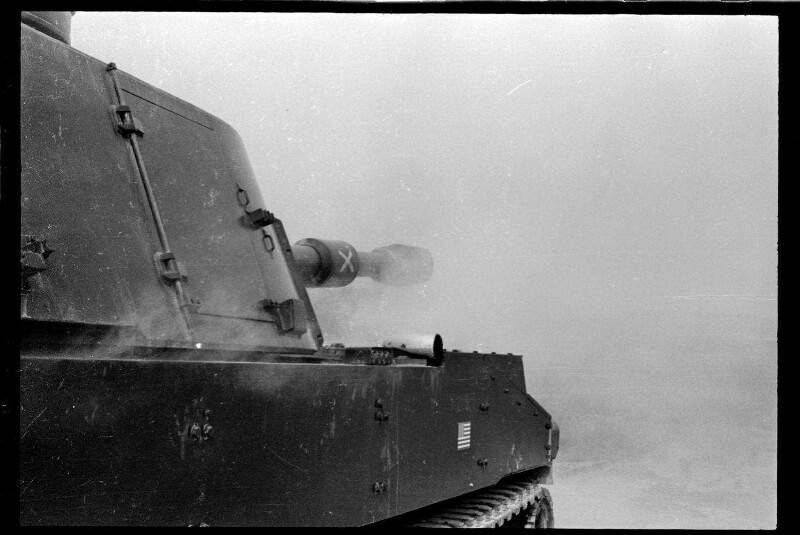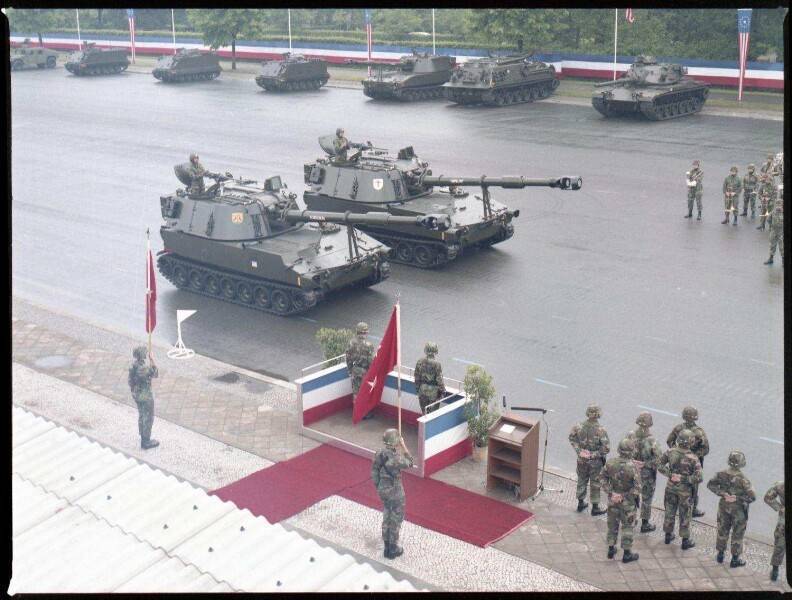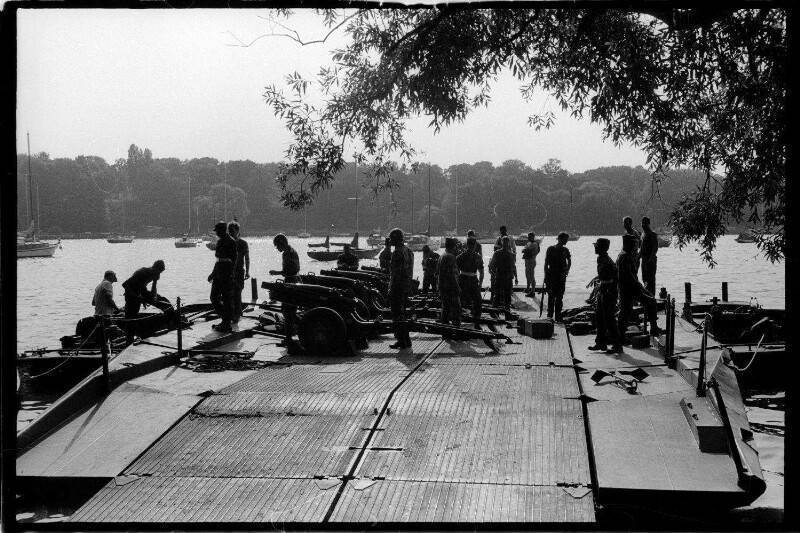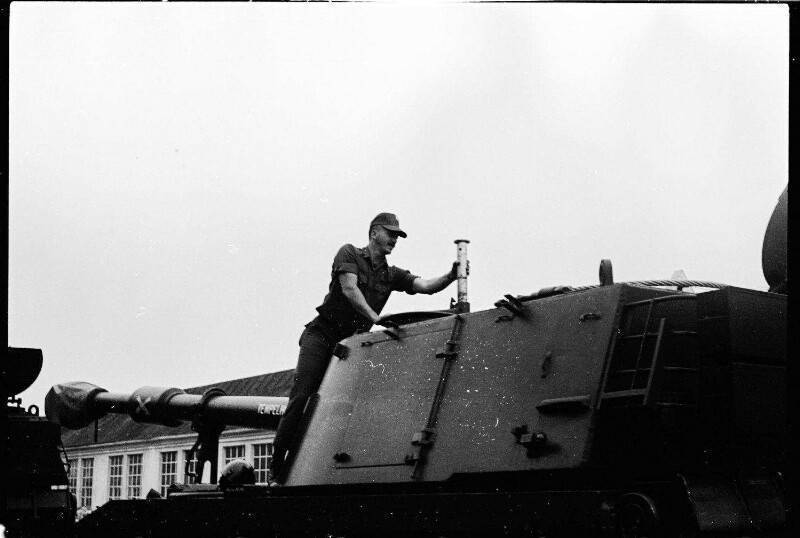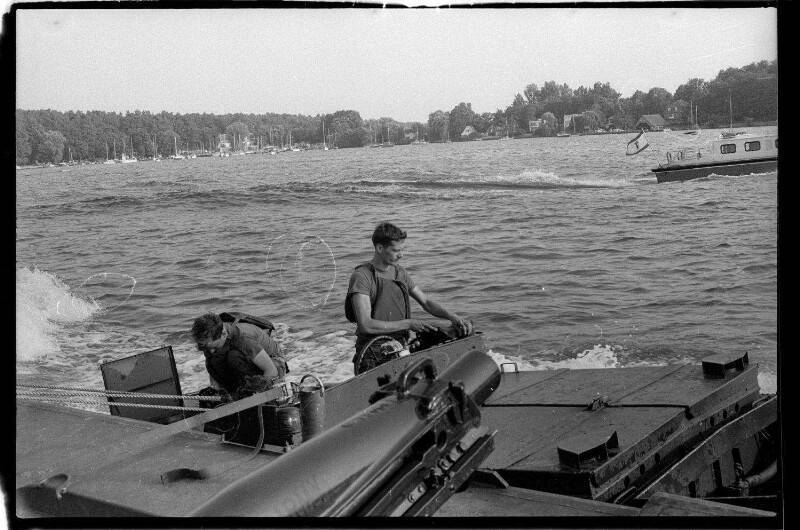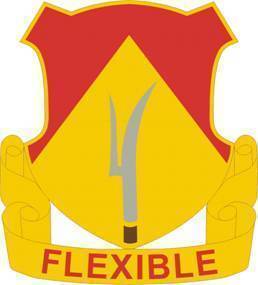Outpost of Democracy
by Robert Thomson
When you wake up in the morning, this is the first question you must ask yourself: „Am I prepared to go to war today against the Russians and East Germans?“ You do not have any more time or to prepare your equipment. You cannot make a final telephone call or write one more letter. You are more than 100 miles behind enemy lines, surrounded and outnumbered 50:1 in artillery pieces. You are a member of C Battery, 94th Field Artillery, Berlin Brigade. Your mission is to provide artillery support to the American, British and French forces that defend the outpost of democracy.
C Battery, 94th FA, is a unique separate battery, but it is no ore unique than the city in which it is stationed. Berlin’s history dates from 1307, when the villages of Berlin and Koeln merged. Berlin’s recent history began in 1971, as it became the German Empire capital. The city was an established trading center and rivaled Paris and London as a European cultural mecca. By 1933, the year of the Nazi ascent to power in Germany, Berlin was the second largest city in europe. Twelve years later Berlin was a bombed, burned hulk.
After Germany’s unconditional surrender on 8 May 1945, Berlin was divided into four sectors, one sector under each of the major Allied powers – the United States, Great Britian, France and the Soviet Union. By 1948 the status of Berlin had become a major cold war issue. The Western powers insisted that the setlement of the Berlin question was directly tied to the reunification of Germany. The Soviets were relentless in their efforts to remove all Western influence from Berlin. They established a 16-month blockade of all land and water routes between West Germany and West Berlin in 1948. Because of the now famous Berlin airlift, the attempt to force the Western powers to surrender the town was unsuccessful.
A period of strained quiet followed. The West Berlin standard of living continued to improve at a more rapid pace than that in the communist-controlled part of town. To escape the oppression of East Berlin, thousands of Germans sought jobs and homes in West Berlin. This caused a serious drain on the skilled labor force of East Berlin and was a constant source of embarrassment to the communists. In the pre-dawn hours of 13 August 1961, thousands of workers and soldierslabored to erect the most famous of Berlin’s landmarks – the 29-mile long Berlin Wall. The exodus to West Berlin and freedom was now stopped and, more than ever before in the preceding 16 years, West Berlin was the outpost of freedom.
Political tensions in Berlin today are more relaxed than they have been in many years, but Britian, France and the United States still station approximately one brigade each in West Berlin. C Battery, 94th FA, takes its place among these elite forces as the only artillery unit on the Allied side of the wall. As the only field artillery in Berlin, the battery’s mission is complex. It encompasses direct support of the American brigade, a requirement to answer calls for fire from British and Frnech brigades and artillery support of major American honors ceremonies. The unit is equiped with six M109A1 howitzers to accomplish the first two missions and five 75-mm pack howitzers to accompl.ish the latter.
The uniqueness of C BAttery’s MTOE is not apparent in its firing battery organization since it has howitzers, ammunition and FDC sections common to all M109A1 units. However, instead of FO sections, C Battery has three liason sections, each with a lieutenant, an E6 and an E4. The sections train with infantry battalions in the American brigade. The all-important FOs are from the infantry battalions and are assigned to the 4.2-inch mortar platoon.
C Battery’s maintenance and communications sections are approximately twice the size of comparable sections in other M109A1 batteries. The lack of normal battalion-level maintenance and communications capabilities makes the size necessary. The battery is attached to an infantry battalion for routine garrison activities, but the battalion lacks the expertise to deal with artillery equipment. Consequently, the men in the maintenance and communications sections of the battery are some of the most highly qualified in the Army. Problmes in automotive and electronic maintenance that cannot be handled at the battery level are sent to the direct support maintenance unit of the Berlin Brigade. Most maintenance work short of depot level can be accomplished there. It is with this unit that C Battery keeps two of its major assets – a seventh M109A1 and M548. At all time these „floats“ are kept ready to replace any howitzer or ammunition carrier in the battery.
The battery’s supply and mess sections and headquarters are similar to those of other M109A1 units.
C Battery personnel receive no special training prior to coming to Berlin, but, once in the battery, each is expected to be the best.
It is significant that there are no special-weapons-trained men assigned to C Battery. This, of course, is no accident, for C Battery is probably the only M109A1 unit in Europe that does not have a nuclear mission.
In a city of more than two million people in a mere 184 square mile, it would be easy to assume that the unit trains very little in artillery skills. This is not true. Not only is Berlin richly endowed with forested areas for maneuver purposes, but the West German government has given the US Army special funds to build and maintain training areas within the city. With these funds, the unit has established an excellent 14.5-mm trainer range only a few hundred meters from the wall. (Caution: Rounds going out of the impact area could trigger an international incident!)
Additionally, there are two modern small arms ranges where members of the battery frequently fire the .45 pistol, M16 rifle, shotgun and M60 machinegun. Several times each year, Allied soldiers meet at these ranges to compare weapons and marksmanships skills.
C Battery does much more than shoot small arms with its British and French compatriots. At least once a year the entire battery participates in a full-scale field training exercise (FTX) conducted by the other Allied nations. These exercises, which usually last three days, give all parties ample opportunity to coordinate operations. Fire support coordination is provided on the basis of oneliaison team to each Allied battalion. The C Battery commander acts as the brigade fire support officer during FTX, just as he does during FTXs with the American brigade. A better understanding of Allied operations and a renewed spirit of teamwork and cooperation in the defense of Berlin result from these exercises with British and French forces.
Physical training is an integral part of every soldier’s day in C Battery. Each morning begins with exercises, followed by a long run.During every atheltic season, C Battery fields a team that competes for brigade championships. Excellent facilities are available for swimming (two indoor Olympic pools), tennis (eight indoor courts), basketball (five indoor courts), bowling (more than 30 lanes), weightlifting, handball, boxing and all outdoor sports. Additionally, a majority of the men participate in mountaineering and alpine ski training in the German Alps.
The variety and intensity of the battery’s training is faciliated by a master training program from the Berlin Brigade. It calls for training in three 6-week blocks; One block is to improve individual and section skills; the next is for unit-level tasks; and, the last is to perform guard duty, brigade details and limited unit training.
During the first block, soldiers are encouraged to attend college courses, foreign language classes, vocational or technical programs and MOS improvement courses – all conducted during the normal duty day. The second block is the heart of the program. It allows the battery to conduct meaningful training with minimum interference. During two of the three unit traingi blocks in a 12-month period, the men of C Battery put their tracks on flatbed railroad cars and leave Berlin to do what Redlegs do best – send steel downrange. Each trip to Grafenwoehr, Wildflecken or other major US Army Europe training areas lasts three to four weeks and culminates in a unit evaluation. The Redlegs of C Battery have consistently demonstrated that they are worthy of their distinct position in the defense of Europe and Berlin by scoring exceptionally high in their tests.
Returning to Berlin could mean perfecting the motions of the salute battery, which must be prepared at a moment’s notice to render honors to a visiting dignitary or spit-shine a howitzer for display at a German-American activity. Even though the hours worked are long and demanding, most memebers of C Battery agree that the off-duty activities make Berlin a desirable place to be stationed.
The pride of each unit member is remarkable – every man knows that he is a representative of a unique battery that has a tradition of excellence. This pride is apparent in each Redleg’s voice as he salutes an officer with the 94th Artillery’S motto, „Flexible, sir.“ And flexible he must be while stationed in Berlin. Dealing with East and West Germans, Russians, French, British and, of course, other Americans requires a unique, flexible approach. Each day this task falls upon the men of C Battery, 94th Field Artillery – the unique Redlegs doing their part to defend the free world’s outpost of democracy.
CPT Robert Thomson, former commander of C Battery, 94th Field Artillery,
became a civilian 1 January 1977.
